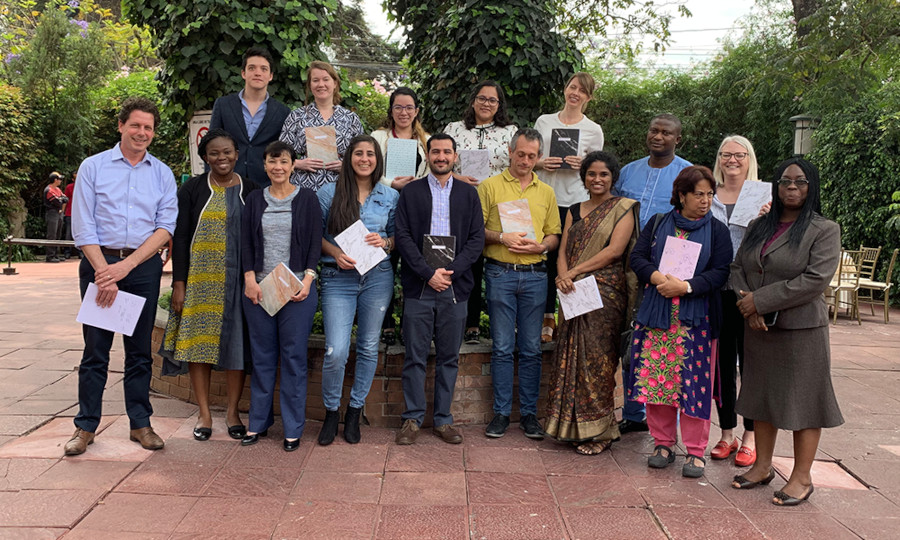global feminist responses to the COVID-19 pandemic: social justice and care are at the forefront
Alarm bells are ringing this week as the High-level Political Forum (HLPF) reconvenes to assess progress towards Sustainable Development Goal (SDG) 4, one of six 2030 Agenda goals under review. One thing is clear, addressing school related GBV requires collaboration across sectors through strategic partnerships.
reflections of an aid worker in the time of COVID-19
As a humanitarian, I’ve worked in health emergencies around the world. Alongside many amazing colleagues, I’ve responded to Ebola epidemics, malnutrition outbreaks, and set up programs for victims of conflict and violence. I work with communities to try and understand their needs, and adapt our responses to their concerns. I’m used to working in times of stress, intensity, and danger. For the first time since I’ve started this work however, I’m scared of what I’m seeing and what we are collectively living through.
gender at work-supporting a global workplace
As a transnational feminist network, we believe in addressing deep structures and social norms within organizations and society and strive to build cultures of equality, inclusion, and peace. The perpetual fight for social change and justice requires a continuous effort, especially in trying times like these. To respond responsibly to these abrupt and unpredictable changes will require adjustments in the way we do our work, and the way we support our staff, associates, consultants as well as our partners.
gender, equity and inclusion: the C&A foundation journey
Alarm bells are ringing this week as the High-level Political Forum (HLPF) reconvenes to assess progress towards Sustainable Development Goal (SDG) 4, one of six 2030 Agenda goals under review. One thing is clear, addressing school related GBV requires collaboration across sectors through strategic partnerships.
taking action to end gender-based violence in schools
Alarm bells are ringing this week as the High-level Political Forum (HLPF) reconvenes to assess progress towards Sustainable Development Goal (SDG) 4, one of six 2030 Agenda goals under review. One thing is clear, addressing school related GBV requires collaboration across sectors through strategic partnerships.
Walking the talk: Think Tanks & Gender

Like all organizations, policy research organizations — also known as “think tanks” — reflect the gendered social norms of their societies. This means that think tanks themselves can either perpetuate gender inequalities or foster gender equality in their organizational structures and research processes.
why care is a political act
There are many ways to understand what care means. Here, we define it as looking after the physical, emotional, spiritual and mental wellbeing, safety and dignity of ourselves and others. Too often, the focus is on a narrow form of self-care, forgetting the essential, and deeply political collective care approach, which includes our families, friends, colleagues and community.
the shell game of self-reflection
Just after my freshman year of college, I was sexually assaulted on the Washington, D.C., metro en route to a summer internship. I remember most of the details: I was wearing a knee-length khaki skirt, and a man standing behind me reached under my skirt and pushed his fingers into my vagina as I was exiting the train.
how to look like you’re trying to end sexual harassment
As the leader of a large complex organization — like the Catholic Church, Fox News, the State of New York, or the United Nations — the pressure on you to take action to end sexual harassment is enormous. Especially with Ronan Farrow and the New Yorker nipping at your heels and talking to so many disgruntled, fed-up women who have been (temporarily) empowered by #MeToo.
why a gender content audit?
The United States is experiencing a critical cultural reckoning, one in which survivors of sexual abuse aren’t only being recognized; they’re also, for the most part, being believed. But the surge in firings of high-profile men in media doesn’t necessarily signal that the industry is becoming a more equitable place for all women, especially those who aren’t white, wealthy, or privileged with a spotlight. When it comes to addressing sexual assault and harassment within media, the #MeToo campaign has blown the cover off the pool and exposed something that will require more effort to resolve: a fetid foundation that’s historically devalued women and their work.
